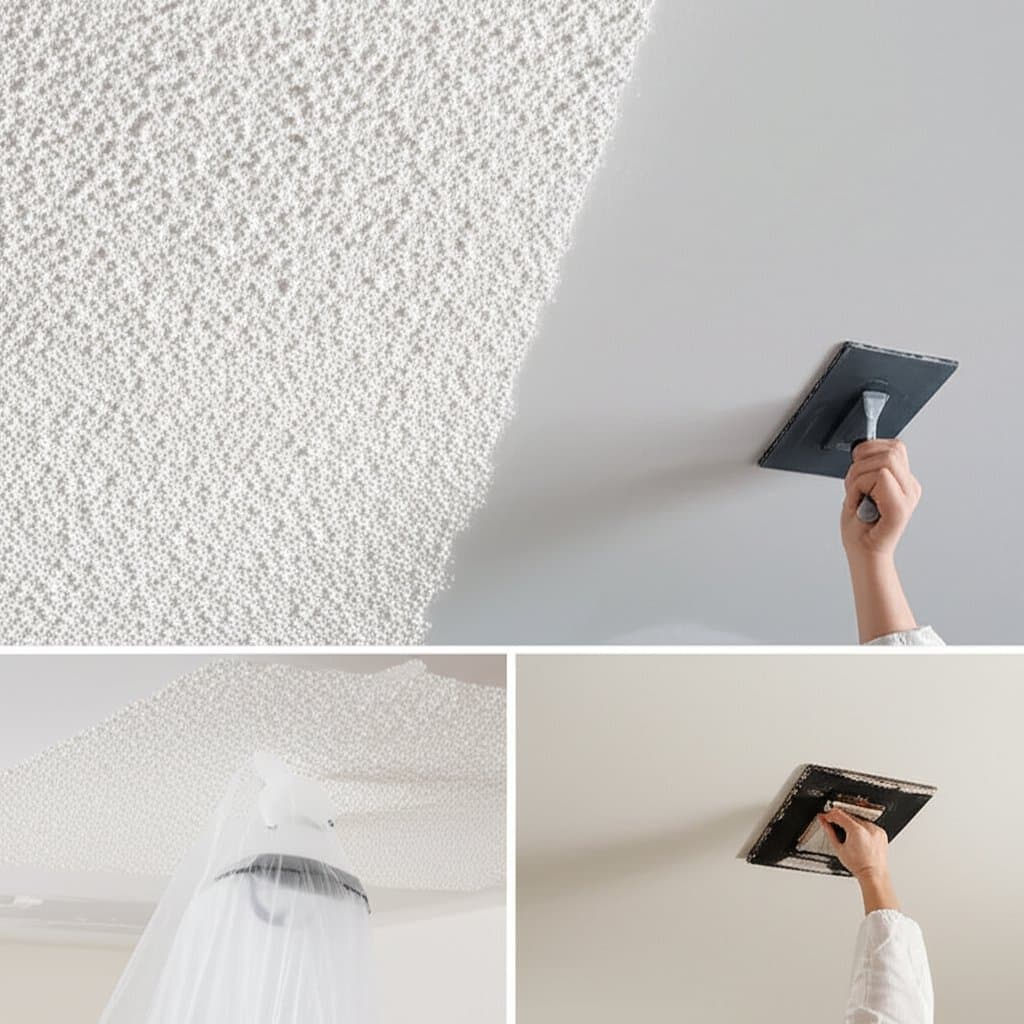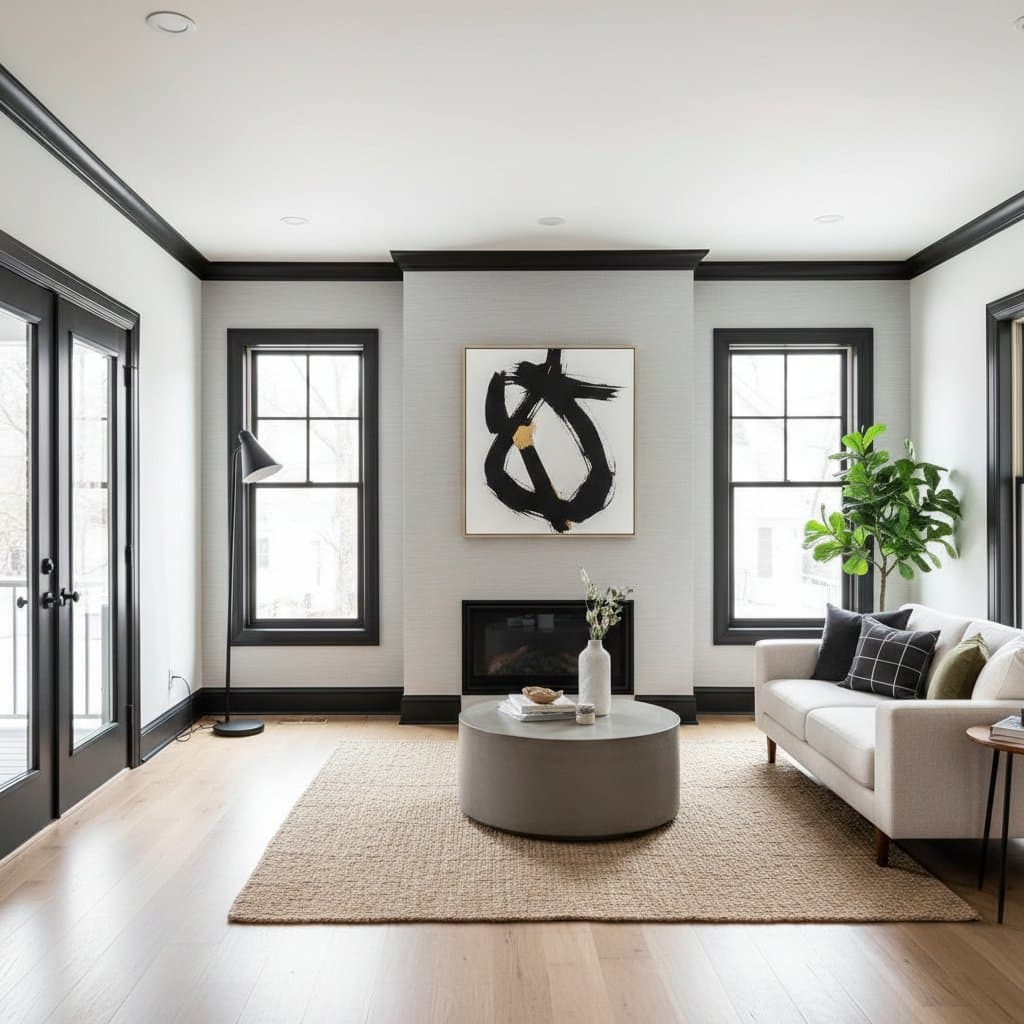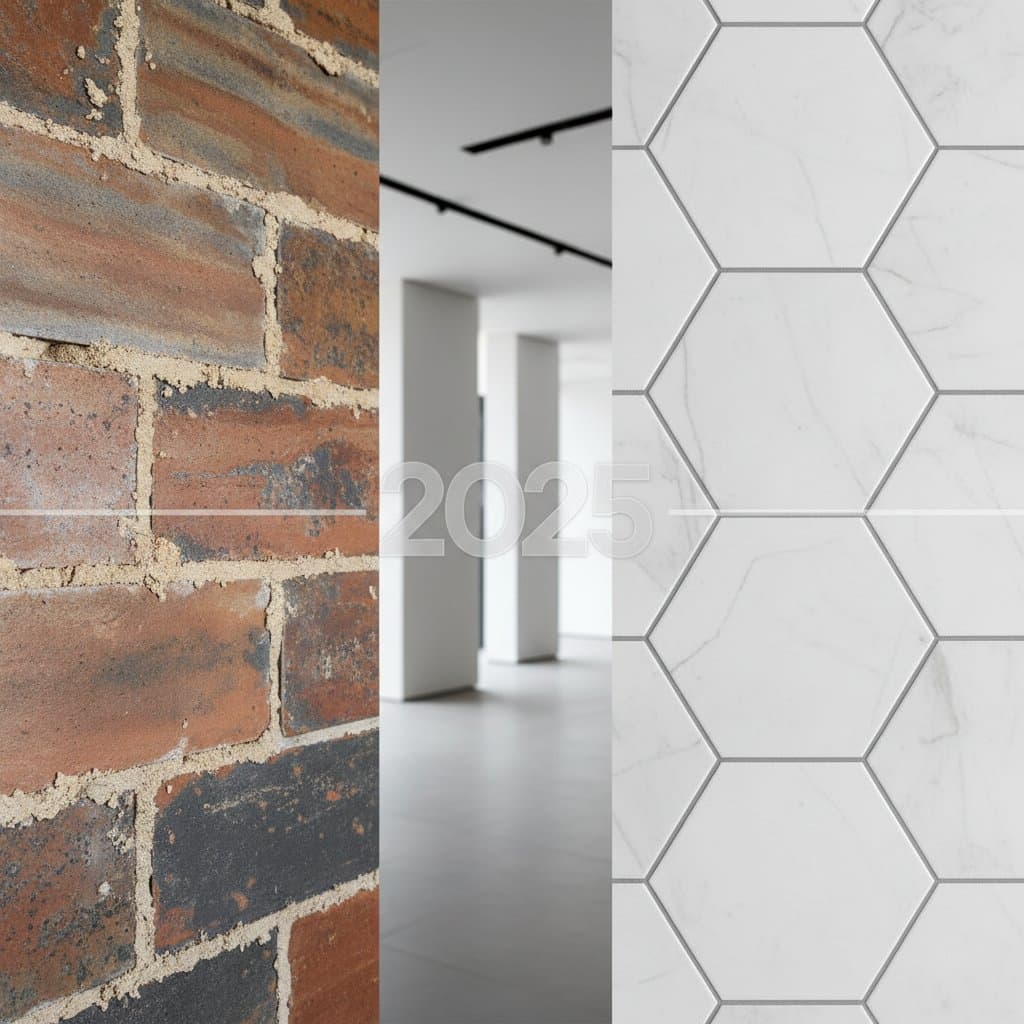The Real Reasons for $800 Popcorn Ceiling Removal Costs
Popcorn ceilings, once popular for their quick application and sound-absorbing qualities, now often appear outdated and prone to dust accumulation. Homeowners frequently seek removal to achieve a smoother, more modern appearance. Quotes around $800 for a single room may seem high, yet they account for essential safety measures, skilled labor, and comprehensive finishing. This article examines the process, cost components, and options for managing expenses effectively.
Origins and Challenges of Popcorn Ceilings
Popcorn texture, sometimes referred to as acoustic or cottage cheese finish, served to conceal surface flaws and reduce installation time during construction. Applied via spray, it provided an inexpensive way to cover imperfections. Over time, however, the texture traps dust, cobwebs, and stains from environmental factors such as moisture or tobacco smoke.
Smoother ceilings enhance light reflection and create a sense of openness. In homes built before 1980, the material may contain asbestos, a hazardous substance used for fire resistance. Disturbing asbestos without proper protocols poses health risks, thereby increasing the complexity and expense of removal.
Components of the $800 Cost Estimate
The $800 price tag encompasses multiple stages, from initial assessments to final cleanup. Each step requires specialized tools, materials, and expertise to ensure safety and quality. Below is a detailed overview of these elements.
Asbestos Testing Procedures
Prior to removal, professionals collect a small ceiling sample and submit it to a certified laboratory for analysis. Results identify the presence of asbestos fibers, with costs ranging from $50 to $150 based on sample quantity and turnaround time.
Positive findings necessitate abatement by licensed specialists. These experts deploy negative air pressure systems, establish containment barriers, and use personal protective equipment. Such measures comply with regulations and justify higher fees due to required certifications and insurance.
Site Preparation and Protection
Removal generates significant dust, demanding thorough preparation. Crews cover floors, furniture, walls, electrical outlets, and ventilation systems with heavy-duty plastic sheeting. They secure edges with tape to prevent particle escape.
This phase often equals the duration of the scraping process. Proper protection minimizes damage to the home and facilitates efficient work, contributing substantially to the overall cost.
Texture Removal Techniques
Workers apply warm water via spray to loosen the texture, followed by scraping with broad drywall blades. Painted surfaces resist softening, extending the effort required. Multi-layered paint buildup can prolong the task significantly.
Overhead work demands physical endurance and precision to prevent damage to the underlying drywall. Labor constitutes the primary expense, typically $300 to $400, reflecting the skill needed for even results.
Surface Repair and Finishing
Exposed after scraping, the ceiling often reveals joints, fasteners, and imperfections. Professionals apply a skim coat of joint compound to level the surface, followed by sanding for smoothness.
Subsequent priming and painting seal the repairs and provide a uniform finish. Materials such as compound, primer, and paint add $200 to $250 to the total, ensuring a professional appearance.
Cleanup and Waste Management
Post-removal, teams remove protective coverings methodically and use HEPA-filtered vacuums to capture residual dust. Debris undergoes proper disposal, adhering to local guidelines.
This final step prevents health hazards from lingering particles. It distinguishes reputable services, adding $50 to $100 while upholding standards of cleanliness.
Detailed Cost Breakdown
Regional variations and ceiling conditions influence pricing, but a standard 200-square-foot room breakdown includes:
- Asbestos testing and permits: $50 to $150
- Preparation and protection: $100 to $150
- Scraping labor: $300 to $400
- Repairs, skim coating, priming, and painting: $200 to $250
- Cleanup and disposal: $50 to $100
Larger areas or deteriorated surfaces elevate costs. Quotes generally cover complete services; partial options may reduce expenses but require additional finishing.
Options for DIY and Professional Services
Absence of asbestos allows for DIY attempts, though professionals offer reliability. Evaluate based on skill level and time availability.
DIY Removal Steps
- Conduct asbestos testing through a certified lab.
- Protect the room with plastic sheeting and tape all seams securely.
- Mist the ceiling lightly with water using a pump sprayer to soften the texture.
- Scrape carefully with a wide drywall knife, maintaining a flat angle to avoid gouges.
- Apply joint compound for repairs, sand smooth, prime, and paint.
Supplies cost $50 to $100, primarily involving time and physical effort. Expect a thorough cleanup to follow.
Hiring Professionals
Select a drywall or painting contractor experienced in texture removal. Inquire about integrated testing and repair services. Full professional jobs range from $800 to $1,200 per room, delivering consistent quality without personal strain.
Asbestos Abatement Requirements
Confirmed asbestos demands certified professionals. They isolate the area, don specialized suits, and manage waste per environmental standards. Expenses may reach $3,000 or higher, prioritizing safety over savings.
Visual and Practical Benefits of Smooth Ceilings
Smooth surfaces distribute light evenly, reducing shadows and enhancing room dimensions. In photography and videography, they produce cleaner, more appealing images compared to textured alternatives.
Design transformations often feature ceiling updates for their high impact. A refinished ceiling elevates the entire space, complementing other elements like lighting and wall colors.
Contractor Pricing Considerations
Quotes incorporate overhead such as insurance, equipment, and staff training. Reliable firms factor in potential callbacks and disposal fees to maintain quality.
Request itemized proposals specifying inclusions. Compare equivalent scopes, such as full refinishing versus scraping alone, to ensure fair value.
Alternatives for Ceiling Finishes
Beyond flat paint, consider these options post-removal:
- Smooth finish: Provides maximum light reflection and simplicity.
- Subtle knockdown or orange peel texture: Offers gentle interest without excess bulk.
- Beadboard panels or wood accents: Suits traditional or rustic aesthetics.
- Tinted paint: Defines architectural features or adds warmth.
Sample finishes in situ under varying lighting to confirm suitability.
Evaluating Quotes and Contracts
Seek contractors who detail asbestos verification, work scope, timelines, and cleanup protocols in writing. Request examples of prior completions to assess seamlessness.
A quality finish exhibits no ridges or inconsistencies. Warranties on workmanship provide added assurance.
Maintaining Updated Ceilings
Smooth ceilings accumulate less dust and clean easily with a damp microfiber cloth. They contribute to brighter, more spacious interiors.
Coordinate with broader renovations, such as fixture installations, for optimal results. The investment yields enduring aesthetic and functional improvements, justifying the initial outlay.
Transforming a textured ceiling into a refined one revitalizes the home environment. With informed planning, homeowners achieve professional outcomes aligned with their vision.



